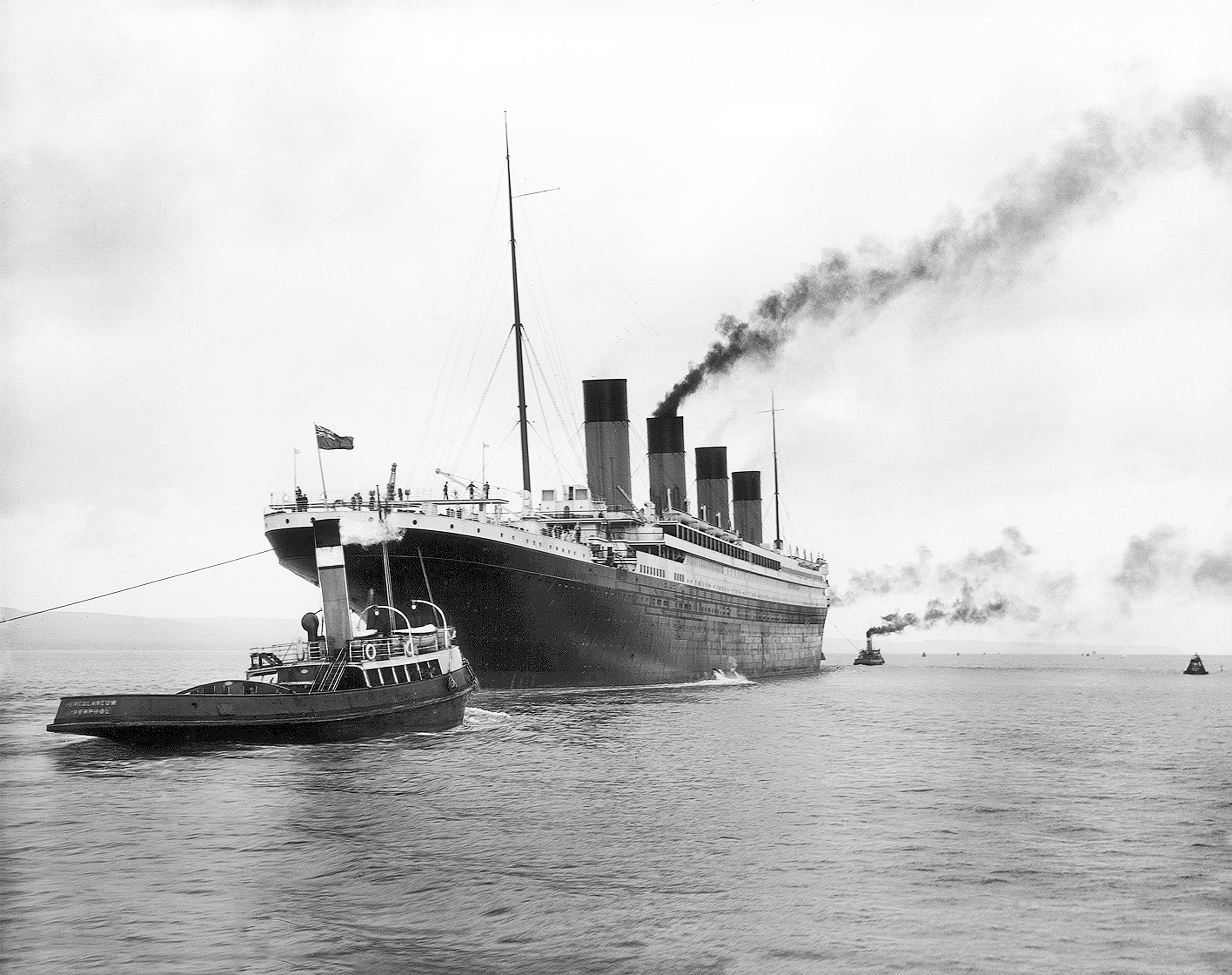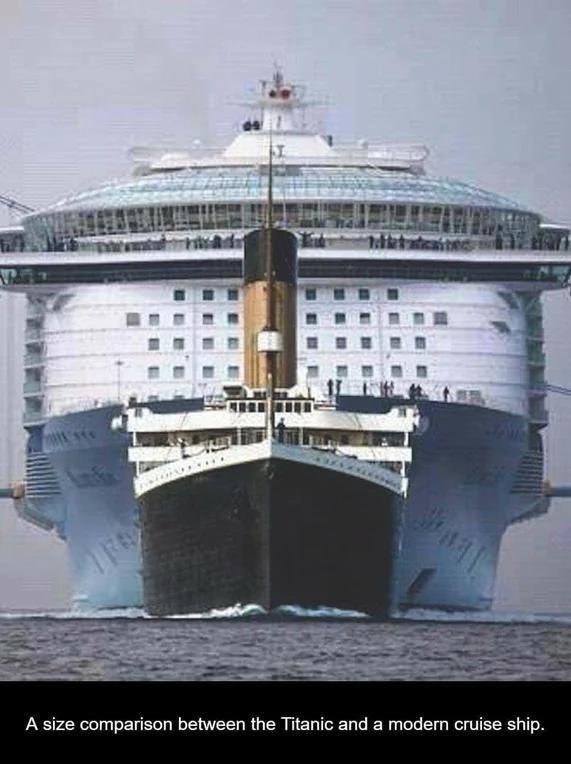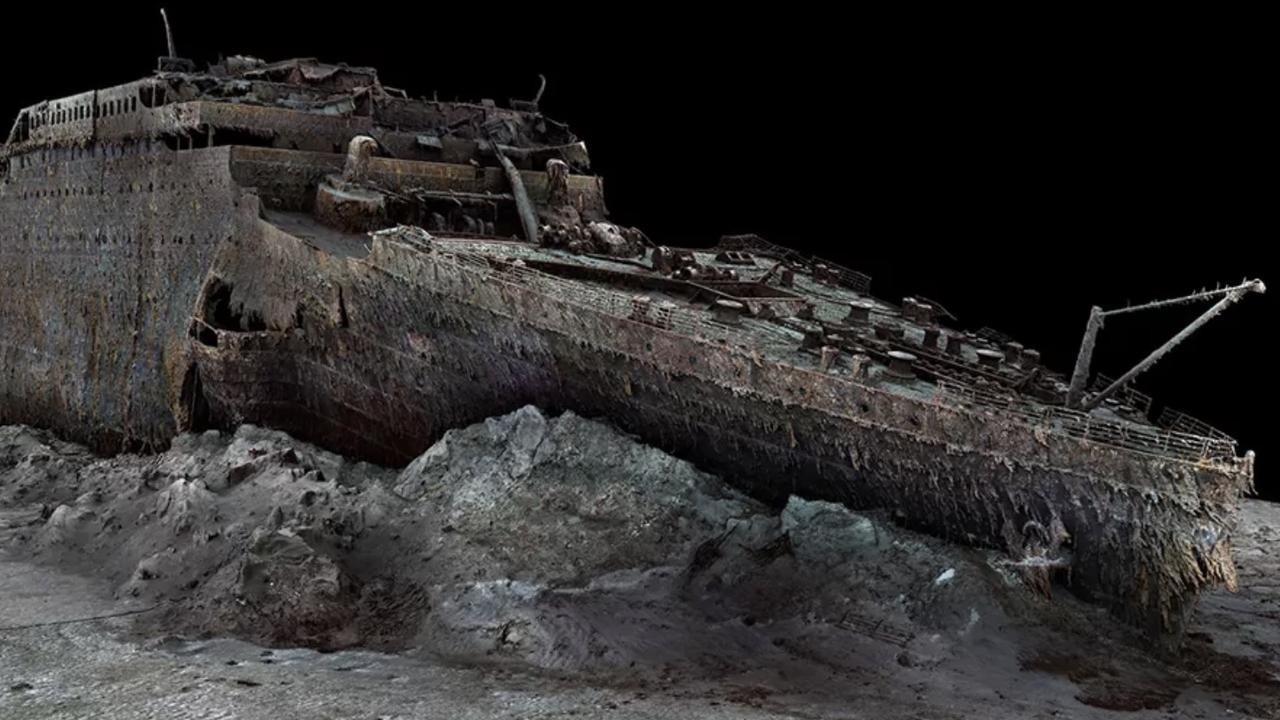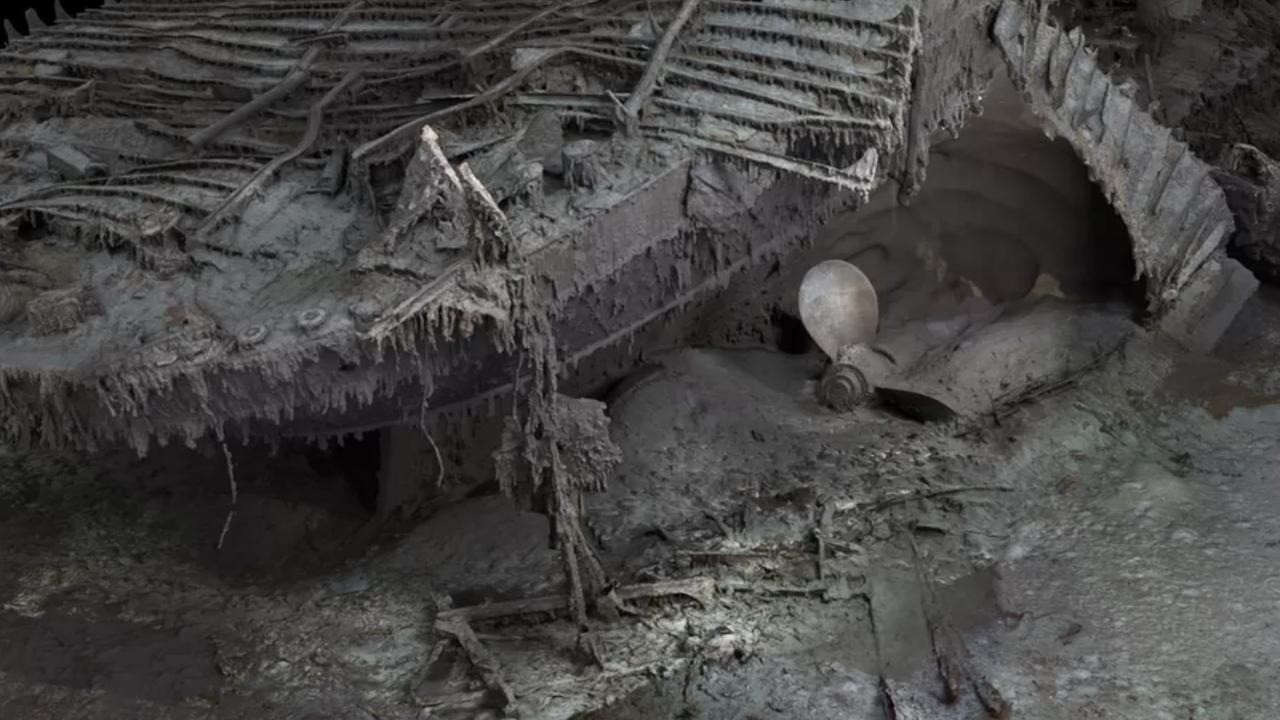How big was the Titanic compared to today’s cruise ships? The answer might surprise you. The Titanic, once the largest passenger liner in the world, pales in comparison to modern cruise vessels. At COMPARE.EDU.VN, we provide comprehensive comparisons to help you visualize these differences. Understanding the size difference offers insight into maritime advancements and historical contexts, providing clarity for those curious about nautical engineering and ship history.
1. Titanic vs. Modern Cruise Ships: An Overview
The Titanic, a name synonymous with luxury and tragedy, was the largest ship of its time in 1912. However, modern cruise ships have surpassed it in size, amenities, and passenger capacity. Today’s cruise liners are floating cities offering a range of entertainment, dining, and recreational activities that the Titanic could only dream of.
The contrast in size isn’t just a matter of numbers; it reflects a century of technological advancements and changing priorities in the cruise industry. To truly appreciate the scale, let’s delve into a detailed comparison of the Titanic and a modern giant, the Royal Caribbean’s Icon of the Seas.
2. Detailed Size Comparison: Titanic vs. Icon of the Seas
Comparing the Titanic to the Icon of the Seas reveals a stark contrast. Here’s a breakdown of their key dimensions:
| Feature | Titanic | Icon of the Seas |
|---|---|---|
| Length | 882.5 feet (269 m) | 1197.5 feet (365 m) |
| Beam (Width) | 92 feet (28 m) | 213 feet (65 m) |
| Height | 10 Decks | 20 Decks |
| Gross Tonnage | 46,328 GT | 250,800 GT |
| Passenger Capacity | 2,435 | 7,600 (at full capacity) |




From the table, it’s clear that the Icon of the Seas dwarfs the Titanic in every dimension. It’s significantly longer, wider, and taller, with a gross tonnage more than five times that of the Titanic. Its passenger capacity is also more than triple, highlighting the scale of modern cruise operations.
3. Visualizing the Size Difference
To truly grasp the size difference, imagine placing the Titanic next to the Icon of the Seas. The Titanic would appear relatively small, almost like a large yacht beside a colossal ocean liner. The sheer volume and height of modern cruise ships are difficult to fathom without a visual aid.
One can also compare the number of decks. The Titanic had 10 decks, while the Icon of the Seas boasts 20. This means the modern ship has twice the number of levels for cabins, entertainment venues, and public spaces.
4. Passenger and Crew Capacity: Then and Now
The Titanic had a passenger capacity of 2,435 and a crew of approximately 900, totaling around 3,335 people on board. In contrast, the Icon of the Seas can accommodate 7,600 passengers and 2,350 crew members, bringing the total to nearly 10,000 people.
This difference in capacity reflects not only the size of the ships but also the evolution of cruise travel. Modern cruise ships are designed to cater to a much larger audience, offering diverse experiences and amenities.
5. Design and Engineering Advancements
The design and engineering of cruise ships have evolved significantly since the Titanic era. The Titanic was built with a steel hull and featured advanced (for the time) safety measures such as watertight compartments. However, modern cruise ships incorporate cutting-edge technology for stability, propulsion, and safety.
Modern ships use advanced computer modeling to optimize hull design, reducing drag and improving fuel efficiency. They also feature sophisticated navigation systems, advanced fire suppression systems, and enhanced life-saving equipment.
6. Onboard Amenities: A Century of Change
The Titanic was luxurious for its time, offering amenities such as a grand staircase, swimming pool, gymnasium, and multiple dining saloons. However, modern cruise ships offer a mind-boggling array of onboard attractions, including:
- Multiple swimming pools and water parks
- Rock climbing walls
- Ice-skating rinks
- Mini-golf courses
- Casinos
- Broadway-style theaters
- A wide variety of restaurants and bars
- Shopping malls
The Icon of the Seas, for example, features its own water park, seven swimming pools, and over 40 dining venues and bars. The scale and diversity of these amenities are simply unmatched by anything available on the Titanic.
7. Safety Features: Learning from the Past
One of the most significant differences between the Titanic and modern cruise ships is the emphasis on safety. The Titanic disaster highlighted critical shortcomings in safety regulations and equipment, leading to significant changes in maritime law.
Modern cruise ships are equipped with:
- Advanced radar and navigation systems to avoid collisions
- More than enough lifeboats and life rafts for all passengers and crew
- Regular safety drills and training for crew members
- Improved hull design and construction for enhanced stability
- Stringent fire safety measures, including fire-resistant materials and advanced suppression systems
The International Convention for the Safety of Life at Sea (SOLAS) sets strict standards for cruise ship safety, ensuring that modern vessels are far safer than their historical counterparts.
8. The Impact of Technology on Ship Size
Technological advancements have played a crucial role in the increasing size of cruise ships. Improved engine designs allow for more powerful and efficient propulsion systems, enabling larger vessels to navigate the seas with ease.
Advanced construction techniques, such as modular construction, allow shipyards to build larger and more complex ships in less time. Computer-aided design (CAD) and computer-aided manufacturing (CAM) have also revolutionized shipbuilding, allowing for greater precision and efficiency.
9. Economic Considerations: Why Bigger is Better
The trend towards larger cruise ships is driven in part by economic considerations. Larger ships can carry more passengers, generating more revenue for cruise lines. They also offer economies of scale, reducing the per-passenger cost of operation.
Larger ships can also accommodate a wider range of amenities, attracting a broader customer base. Cruise lines invest heavily in onboard attractions to differentiate themselves from competitors and provide passengers with unforgettable experiences.
10. Environmental Impact: A Growing Concern
The increasing size of cruise ships has raised concerns about their environmental impact. Larger ships consume more fuel, contributing to air and water pollution. They also generate more waste, which can strain port facilities and harm marine ecosystems.
The cruise industry is under increasing pressure to reduce its environmental footprint. Many cruise lines are investing in cleaner fuels, such as liquefied natural gas (LNG), and implementing technologies to reduce emissions and waste.
11. The Allure of the Titanic: A Historical Perspective
Despite its smaller size and tragic history, the Titanic continues to capture the imagination of people around the world. The ship represents a bygone era of luxury and elegance, and its story serves as a reminder of the human cost of technological hubris.
The Titanic’s legacy is preserved in museums, books, and films, ensuring that its story will continue to be told for generations to come. The allure of the Titanic lies not just in its size or amenities, but in its historical significance and the poignant stories of those who sailed on it.
12. Modern Cruise Ships: Floating Cities of Entertainment
Modern cruise ships are often described as floating cities, offering a vast array of entertainment, dining, and recreational options. These vessels are designed to cater to a wide range of tastes and preferences, ensuring that there is something for everyone on board.
From Broadway-style shows to gourmet dining experiences, modern cruise ships offer a level of luxury and entertainment that was unimaginable in the Titanic era. These ships are destinations in themselves, providing passengers with a complete vacation experience without ever having to leave the vessel.
13. Comparing the Interior Design and Layout
The interior design and layout of the Titanic reflected the Edwardian era, with opulent décor, grand public spaces, and segregated passenger classes. In contrast, modern cruise ships feature contemporary designs, open layouts, and a more egalitarian approach to passenger accommodations.
Modern ships emphasize natural light, spacious cabins, and seamless integration of indoor and outdoor spaces. They also offer a wide range of cabin options, from budget-friendly interior rooms to lavish suites with private balconies and butler service.
14. The Role of Cruise Ships in Modern Tourism
Cruise ships play a significant role in modern tourism, offering a convenient and cost-effective way to explore multiple destinations. Cruises are popular with families, couples, and solo travelers, providing a hassle-free vacation experience with all accommodations, meals, and entertainment included.
The cruise industry contributes billions of dollars to the global economy, supporting jobs in shipbuilding, tourism, and related industries. Cruise ships also bring tourists to ports around the world, boosting local economies and promoting cultural exchange.
15. The Future of Cruise Ship Design and Technology
The future of cruise ship design and technology is likely to be shaped by environmental concerns, technological advancements, and changing consumer preferences. We can expect to see:
- More environmentally friendly ships powered by alternative fuels
- Greater use of automation and artificial intelligence to improve efficiency and safety
- Innovative onboard attractions and entertainment options
- Personalized experiences tailored to individual passenger preferences
- Greater emphasis on sustainability and responsible tourism practices
Cruise lines are continually investing in research and development to create the next generation of cruise ships, pushing the boundaries of what is possible on the high seas.
16. How the Titanic Influenced Modern Maritime Safety Regulations
The sinking of the Titanic led to significant changes in maritime safety regulations, many of which are still in effect today. The International Convention for the Safety of Life at Sea (SOLAS) was established in response to the disaster, setting standards for:
- The number of lifeboats required on passenger ships
- The training of crew members in emergency procedures
- The use of wireless communication for distress calls
- The establishment of the International Ice Patrol to monitor icebergs in the North Atlantic
These regulations have significantly improved the safety of maritime travel, reducing the risk of similar disasters in the future.
17. Comparing the Cost of a Titanic Ticket vs. a Modern Cruise
Adjusting for inflation, a first-class ticket on the Titanic would cost approximately $100,000 today. This price included luxurious accommodations, gourmet meals, and access to the ship’s finest amenities.
In contrast, a modern cruise can range in price from a few hundred dollars for a short, budget-friendly trip to tens of thousands of dollars for a luxurious suite on a premium cruise line. The cost depends on factors such as the length of the cruise, the destination, the type of cabin, and the cruise line.
While a first-class ticket on the Titanic was an exclusive luxury, modern cruises offer a range of options to suit different budgets, making cruise travel accessible to a wider audience.
18. The Psychological Impact of Ship Size on Passengers
The size of a cruise ship can have a significant psychological impact on passengers. Some people are drawn to the vastness and grandeur of large ships, feeling a sense of awe and excitement. Others may feel overwhelmed or disoriented by the sheer scale of the vessel.
Cruise ship designers are aware of these psychological factors and strive to create spaces that are both impressive and comfortable. They use techniques such as:
- Breaking up large spaces into smaller, more intimate areas
- Using natural light and greenery to create a sense of connection to the outdoors
- Providing clear signage and wayfinding systems to help passengers navigate the ship
- Offering a variety of activities and amenities to cater to different interests and preferences
19. Navigating the Open Seas: Then and Now
Navigating the open seas has changed dramatically since the Titanic era. The Titanic relied on traditional navigation methods such as celestial navigation and dead reckoning, using instruments like sextants and compasses.
Modern cruise ships use sophisticated electronic navigation systems, including:
- GPS (Global Positioning System)
- Radar
- Electronic charts
- Automatic Identification System (AIS)
These systems provide real-time information about the ship’s position, speed, and heading, as well as the location of other vessels and potential hazards. They also allow for precise course corrections, reducing the risk of collisions and groundings.
20. The Evolution of Cruise Destinations and Itineraries
The Titanic was en route from Southampton, England, to New York City, a transatlantic voyage that was a common route for passenger liners in the early 20th century. Today, cruise ships travel to destinations all over the world, offering a wide variety of itineraries and experiences.
Popular cruise destinations include:
- The Caribbean
- Alaska
- The Mediterranean
- The Baltic Sea
- Asia
- The South Pacific
Cruise itineraries can range from a few days to several months, offering passengers the opportunity to explore diverse cultures, landscapes, and attractions.
21. Comparing the Dining Experiences: From Formal to Casual
The dining experience on the Titanic was formal and structured, with separate dining saloons for different passenger classes. First-class passengers enjoyed lavish meals prepared by skilled chefs, while second and third-class passengers had simpler but still satisfying fare.
Modern cruise ships offer a wide range of dining options, from formal dining rooms to casual buffets and specialty restaurants. Passengers can choose from a variety of cuisines, including:
- Italian
- French
- Asian
- American
- Seafood
Many cruise ships also offer flexible dining options, allowing passengers to eat when and where they want.
22. The Role of Technology in Enhancing the Cruise Experience
Technology plays a crucial role in enhancing the cruise experience, from booking and check-in to onboard entertainment and communication. Cruise lines use technology to:
- Streamline the booking process and provide personalized recommendations
- Offer online check-in and mobile boarding passes
- Provide onboard Wi-Fi and cellular connectivity
- Offer interactive maps and digital signage
- Provide entertainment options such as streaming movies and live music
- Facilitate communication between passengers and crew members
Technology also enhances safety and security, with features such as facial recognition and advanced surveillance systems.
23. The Crew Experience: Then and Now
The crew experience on the Titanic was vastly different from that on modern cruise ships. Crew members on the Titanic often worked long hours for low pay, with limited opportunities for advancement.
Modern cruise ships offer better working conditions, higher pay, and more opportunities for career growth. Crew members come from all over the world, creating a diverse and multicultural environment.
Cruise lines invest in training and development programs to help crew members enhance their skills and advance their careers. They also provide crew members with comfortable accommodations, recreational facilities, and opportunities for social interaction.
24. Sustainability Efforts in the Modern Cruise Industry
The modern cruise industry is increasingly focused on sustainability, implementing measures to reduce its environmental impact and promote responsible tourism practices. These efforts include:
- Investing in cleaner fuels and technologies to reduce emissions
- Implementing waste management and recycling programs
- Conserving water and energy
- Protecting marine ecosystems
- Supporting local communities
Cruise lines are also working to educate passengers about sustainability and encourage them to make responsible choices while on board and ashore.
25. The Future of Luxury Travel: Cruise Ships vs. Other Options
Cruise ships are just one option for luxury travel, competing with other options such as:
- Luxury hotels and resorts
- Private villas and estates
- Exclusive tours and expeditions
- Private jets and yachts
Each option offers its own unique advantages and disadvantages, depending on the traveler’s preferences and priorities. Cruise ships offer a convenient and all-inclusive way to explore multiple destinations, while luxury hotels and resorts provide a more immersive and personalized experience in a single location.
The future of luxury travel is likely to be shaped by a combination of factors, including:
- Changing consumer preferences
- Technological advancements
- Environmental concerns
- Economic conditions
26. Entertainment and Recreation on the Titanic
Entertainment on the Titanic was limited compared to modern cruise ships, but it still offered a variety of activities for passengers. First-class passengers could enjoy:
- Live music performances
- Dancing in the ballroom
- Reading in the library
- Playing games in the smoking room
- Swimming in the pool
- Exercising in the gymnasium
Second and third-class passengers had fewer options, but they could still enjoy live music, dancing, and socializing in the public spaces.
27. Modern Cruise Ship Activities and Shows
Modern cruise ships offer a dazzling array of activities and shows, catering to diverse tastes and interests. Passengers can choose from:
- Broadway-style musicals
- Live music concerts
- Comedy shows
- Magic shows
- Dance performances
- Movie screenings
- Casino games
- Sports competitions
- Cooking classes
- Art auctions
- Shopping
Many cruise ships also offer themed cruises, focusing on specific interests such as music, food, or history.
28. Cabin Sizes and Amenities: Then and Now
Cabins on the Titanic varied in size and amenities depending on the passenger class. First-class cabins were spacious and luxurious, featuring:
- Private bathrooms
- Sitting areas
- Walk-in closets
- Views of the ocean
Second and third-class cabins were smaller and more basic, with shared bathrooms and limited amenities.
Modern cruise ships offer a wide range of cabin options, from budget-friendly interior rooms to lavish suites with private balconies and butler service. All cabins feature:
- Private bathrooms
- Climate control
- Televisions
- Telephones
- Hair dryers
- Safes
29. Accessibility for Passengers with Disabilities
Accessibility for passengers with disabilities was limited on the Titanic, reflecting the standards of the time. Modern cruise ships are designed to be more accessible, with features such as:
- Wheelchair-accessible cabins
- Ramps and elevators
- Accessible restrooms
- Assistive listening devices
- Sign language interpreters
Cruise lines are also working to train crew members to assist passengers with disabilities and provide a welcoming and inclusive environment.
30. Understanding Gross Tonnage and Ship Measurement
Gross tonnage (GT) is a measure of a ship’s internal volume, not its weight. It is calculated based on the size and shape of the ship’s enclosed spaces.
The Titanic had a gross tonnage of 46,328 GT, while the Icon of the Seas has a gross tonnage of 250,800 GT. This means that the Icon of the Seas has more than five times the internal volume of the Titanic.
Gross tonnage is used to determine port fees, safety regulations, and manning requirements. It is an important metric for comparing the size of different ships.
31. Comparing Ship Stability and Hull Design
The Titanic’s hull was constructed of steel and divided into watertight compartments, which were intended to prevent the ship from sinking in the event of a breach. However, the compartments were not tall enough to prevent water from spilling over the top if multiple compartments were flooded.
Modern cruise ships have more advanced hull designs and stability systems, including:
- Double hulls
- Stabilizer fins
- Advanced ballast systems
- Computerized stability monitoring
These features enhance the ship’s stability and reduce the risk of capsizing.
32. Communication Technologies: Then and Now
Communication on the Titanic relied on wireless telegraphy, also known as Morse code. The ship’s wireless operators sent and received messages to and from other ships and shore stations, providing vital information about weather conditions and potential hazards.
Modern cruise ships use a variety of communication technologies, including:
- Satellite communication
- Cellular connectivity
- Wi-Fi
- Voice over IP (VoIP)
- Social media
These technologies allow passengers and crew members to stay connected with the world and communicate with each other in real-time.
33. The Impact of Climate Change on Cruise Travel
Climate change is having a significant impact on cruise travel, with rising sea levels, extreme weather events, and changing ocean currents affecting cruise destinations and itineraries.
Cruise lines are responding to these challenges by:
- Developing more sustainable ships and technologies
- Diversifying cruise itineraries to avoid climate-sensitive regions
- Working with local communities to mitigate the impacts of climate change
- Educating passengers about climate change and responsible travel practices
34. The Role of Simulation in Cruise Ship Design and Safety
Simulation plays a crucial role in cruise ship design and safety, allowing engineers and designers to test and refine their designs before construction begins.
Simulations can be used to:
- Model the ship’s hydrodynamic performance
- Assess its stability in different sea conditions
- Evaluate the effectiveness of safety systems
- Train crew members in emergency procedures
Advanced simulation tools allow for realistic and accurate modeling of complex systems, reducing the risk of design flaws and improving the safety of cruise ships.
35. Analyzing Fuel Efficiency and Propulsion Systems
Fuel efficiency is a critical consideration for cruise lines, as fuel costs can account for a significant portion of their operating expenses.
The Titanic was powered by coal-fired steam engines, which were relatively inefficient. Modern cruise ships use more efficient propulsion systems, such as:
- Diesel-electric engines
- Gas turbines
- Podded propulsion systems
These systems reduce fuel consumption and emissions, making cruise ships more environmentally friendly.
36. The Titanic’s Legacy in Popular Culture
The Titanic has had a lasting impact on popular culture, inspiring countless books, movies, and documentaries. The story of the Titanic has been romanticized and dramatized, but it continues to resonate with audiences around the world.
The Titanic’s legacy serves as a reminder of the human cost of technological hubris and the importance of safety and preparedness.
37. Exploring the Titanic Wreckage: Past and Future
The wreckage of the Titanic lies at a depth of 12,500 feet in the North Atlantic Ocean. The wreck was discovered in 1985 and has been explored by numerous expeditions.
The Titanic wreckage is deteriorating over time, due to the effects of corrosion and marine life. There is ongoing debate about whether to leave the wreck undisturbed or to attempt to salvage artifacts.
Future expeditions to the Titanic wreckage may use advanced technologies such as:
- Remotely operated vehicles (ROVs)
- Autonomous underwater vehicles (AUVs)
- Virtual reality (VR)
- Artificial intelligence (AI)
38. Frequently Asked Questions (FAQs) About Titanic and Modern Cruise Ships
Q1: How much bigger is the Icon of the Seas compared to the Titanic?
The Icon of the Seas is significantly larger, with a length of 1197.5 feet compared to the Titanic’s 882.5 feet, and a gross tonnage of 250,800 GT compared to the Titanic’s 46,328 GT.
Q2: What were the main differences in amenities between the Titanic and modern cruise ships?
The Titanic offered basic amenities like a swimming pool and gymnasium, while modern cruise ships boast water parks, casinos, Broadway-style theaters, and a wide variety of dining options.
Q3: How have safety regulations changed since the Titanic disaster?
The Titanic disaster led to the SOLAS convention, which set strict standards for lifeboats, crew training, wireless communication, and the establishment of the International Ice Patrol.
Q4: What technologies are used on modern cruise ships for navigation?
Modern cruise ships use GPS, radar, electronic charts, and AIS for precise navigation and collision avoidance.
Q5: How does the environmental impact of the Titanic compare to modern cruise ships?
Modern cruise ships consume more fuel and generate more waste, but the industry is working to reduce its environmental footprint through cleaner fuels and waste management programs.
Q6: How did the Titanic influence modern maritime safety regulations?
The sinking of the Titanic led to the establishment of SOLAS, which significantly improved maritime safety standards.
Q7: What was the cost of a first-class ticket on the Titanic in today’s dollars?
A first-class ticket on the Titanic would cost approximately $100,000 today, adjusted for inflation.
Q8: How has the role of crew members changed from the Titanic era to modern cruise ships?
Modern cruise ships offer better working conditions, higher pay, and more opportunities for career growth compared to the Titanic era.
Q9: What are some examples of sustainability efforts in the modern cruise industry?
Examples include investing in cleaner fuels, implementing waste management programs, conserving water and energy, and supporting local communities.
Q10: What are the key factors shaping the future of cruise ship design and technology?
Environmental concerns, technological advancements, and changing consumer preferences are shaping the future of cruise ship design and technology.
Conclusion: Appreciating the Evolution of Cruise Travel
The comparison between the Titanic and modern cruise ships highlights the remarkable evolution of maritime technology, safety standards, and passenger experiences. While the Titanic remains a poignant symbol of a bygone era, modern cruise ships represent the pinnacle of luxury, entertainment, and innovation on the high seas. Understanding how big was the Titanic compared to today’s cruise ships provides a valuable perspective on the progress of naval engineering and the changing landscape of travel.
Ready to explore more comparisons and make informed decisions? Visit COMPARE.EDU.VN at 333 Comparison Plaza, Choice City, CA 90210, United States, or contact us via Whatsapp at +1 (626) 555-9090. Our website, compare.edu.vn, offers detailed comparisons to help you make the best choices. We are here to assist you in navigating your options and finding the perfect fit for your needs.

